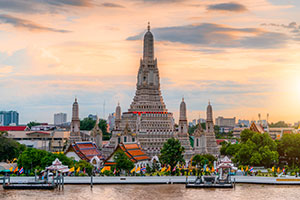10-Nights Bhutan: Land of Mysticism and Mythology - Signature Land

10-Nights Bhutan: Land of Mysticism and Mythology - Signature Land
Bhutan
National Geographic Expeditions
Vacation Offer ID 1505568
Reference this number when contacting our travel specialist.
National Geographic Expeditions
Embark on a journey that envelopes you in destinations where beauty and spirituality intertwine within the landscapes and the people that live here. Make a pilgrimage to the cliffside Tiger’s Nest Monastery high above the Paro Valley and hike through rural villages and farms, stopping to interact with locals to learn about daily life in Bhutan. You’ll also visit sacred Buddhist temples to participate in centuries-old ceremonies, as well as see some awe-inspiring statues of the Buddha built throughout the country.Vacation Inclusions
- Transfers upon arrival and departure (if applicable)
- Transportation provided on-trip
- Accommodation as indicated in the itinerary
- Meals as indicated in the itinerary
- Daily activities and excursions as indicated in the itinerary
- All gratuities except the Expedition Leader
Featured Destinations
| Bangkok | Destination Guide |
| Paro | Destination Guide |
| Punakha | Destination Guide |
| Phobjikha Valley | |
| Thimphu | Destination Guide |
Valid Date Ranges
All prices are per person, based on double occupancy, unless otherwise stated and are subject to availability and change without notice and do not include international or internal airfare. All prices are quoted in U.S. Dollars. Prices listed for each offer may pertain to specific departure dates. Single supplement applies. Other restrictions, blackout dates and holiday surcharges may apply. Itinerary and inclusions subject to change.
Not included: Airfare to and from destination. Trip cancellation insurance or any other travel insurance; Visas when applicable; Alcoholic beverages; Expedition Leader gratuities.
Not included: Airfare to and from destination. Trip cancellation insurance or any other travel insurance; Visas when applicable; Alcoholic beverages; Expedition Leader gratuities.
All fares are quoted in US Dollars.





